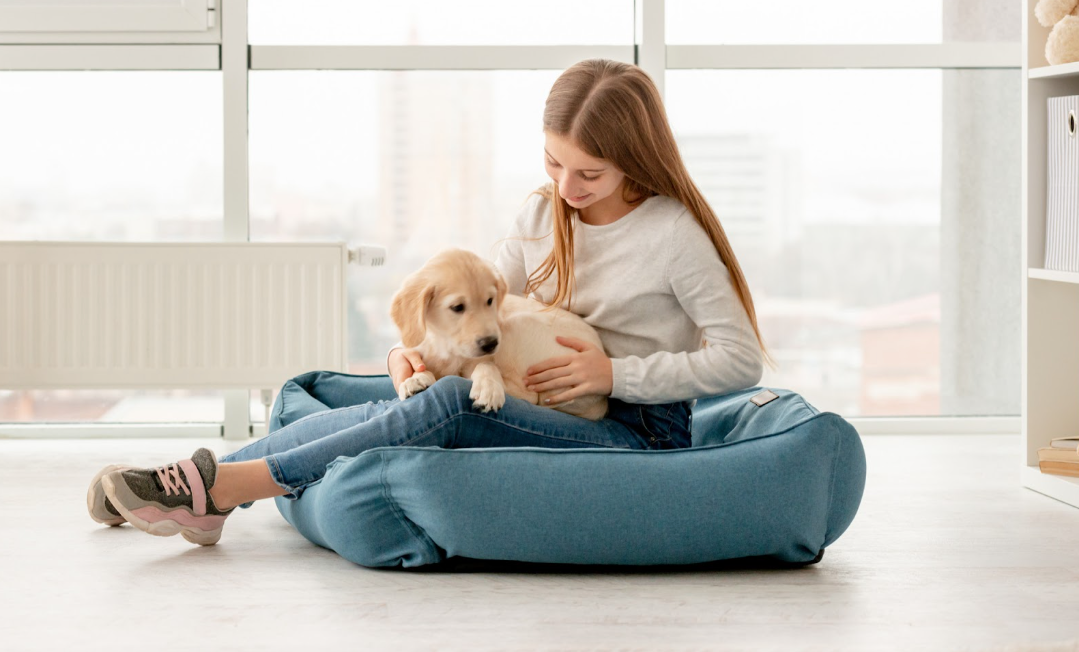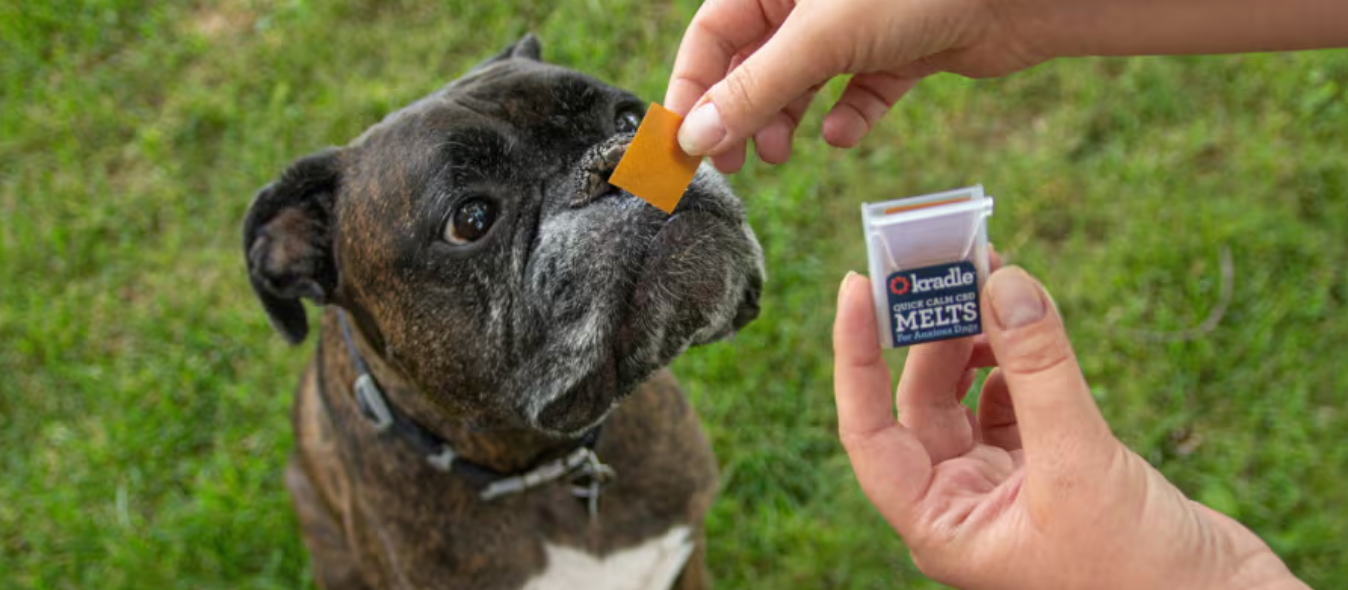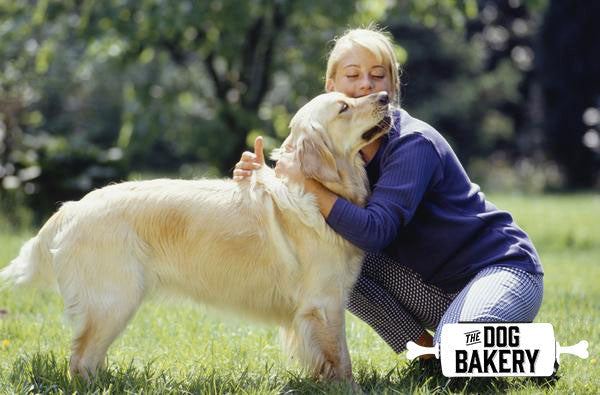
Last week on the blog, in the spirit of spring cleaning, we talked about how often to bathe your pets and how often to wash their favorite belongings (leash, bed, food bowl, toys, etc.) While we agreed that there was some wiggle room on most things, we think we found a good general consensus for cleaning across your doggie items. In that same squeaky clean vibe, this week we thought we’d discuss how to clean those same items using all natural products. Since all of the too-be cleaned items come in such close contact with your pup, it’s always best to make sure anything you use is pet friendly. Working with all natural cleaners helps ensure that your pup likely won’t ingest something that could make them ill (though it’s always good to be on the safe side and double check your ingredients). We hope we’ve dug up some simple, cheap and interesting ways to keep your pup so fresh and so clean (clean).
 Photo by@jaspernmaddylou
Photo by@jaspernmaddylou
Bathing: Obviously there’s no real better way than good ‘ol dog shampoo, but you can do your pup a favor by picking a brand that offers better ingredients. Our office pups get a bath about once a month using DOGSPA shampoo, and there are lots of other natural shampoos on the market for keeping your little one (and their skin) clean and happy! Look for labels with no chemicals, unnatural fragrances, or unnecessary ingredients.
Hardwood floors: Many of the conventional cleaning products that promise an easy and sparkling floor are terrible for our health and the environment. Floor cleaners that give you shine can also give you off-gassing of petroleum-based polymers. In addition, most of the fragrance that accompanies conventional floor cleaners are either indoor air pollutants on their own, or are inert on their own but mix with ozone to create formaldehyde and other toxic air contaminates. So, obviously, best to avoid those! The best non-toxic floor cleaning solution is ¼ of a cup of mild liquid dishwashing detergent added to a bucket of warm water (for damp mopping). For scuff marks use a sprinkle of baking soda on a damp sponge and rub. Go over the floor twice, first to dissolve the dirt and then again, after rinsing the mop and wringing it thoroughly, again to rinse. The floor can then be buffed dry with a towel—this is done easily by attaching a towel to a clamp mop handle. Of course, different kinds of hardwood floors need slightly different cleaning procedures. Cleaners recommended for a penetrating floor finish are solvent-based. Use a natural citrus solvent rather than a mineral spirit or turpentine based cleaner. Spray a light film on the floor and dry mop with a microfiber or regular dust mop. Here are some other unique tips for cleaning your floors.
Carpeted floors: Like for hardwood floors, some of the products you can buy commercially are better than others, and if you need to buy a cleaner, there are definitely some kinder options out there. Be sure to do your research! If you have the time and interest in making your own, you can do it for less than what you’d pay and with many common items! We’ve included a personal favorite here, but be sure to check out more here and here.
White vinegar – White vinegar is known to remove tough stains, especially those from pets. It has some great deodorizing properties and will tackle any tough stain. Water is needed to dilute the vinegar because it can be quite potent. Vinegar is safe to use on most fabrics and is effective against many strains.
Lavender essential oil – Lavender EO gives this spray even more deodorizing properties and helps tackle bacteria and viruses lurking in your carpets. It is one of the most versatile essential oils and is safe to use around children and pets.
Ingredients:
- 1 cup white vinegar
- 2 cups water
- 2 tsp salt
- 15 drops lavender essential oil, or another clear essential oil of choice (find 100% pure essential oils here)
- Combine vinegar and water in a large spray bottle.
- Add in salt and lavender essential oil.
- Cap and shake.
- Spray on carpets liberally, shaking bottle frequently between sprays.
- Allow carpets to dry.
- Vacuum treated areas.
Note: For tougher stains, spray mixture directly on stain. Let dry and vacuum. Repeat if necessary.
 Source: DIYNatural.com
Source: DIYNatural.com
Blankets / sheets on your bed: All laundry detergents leave a residue on clothing, which is absorbed by our skin (and inhaled). The ill effects of some of the chemicals in detergents range from skin or eye irritation to possibly much more serious, such as endocrine disruption. Because of “trade secrets,” manufacturers are not required to disclose what’s in their detergent, so the ingredient list is usually vague and not very helpful. A 2008 study found that of all the top selling laundry detergent brands tested, each contained at least one ingredient considered hazardous under federal law. None of these ingredients was listed on the label and the study didn’t disclose which brands were tested. Find a few we trust here, and consider washing your linens with these!
Their beds: Most beds can go in the washing machine, so consider cleaning with one of the natural products found above! While there are detergents touted as just for pets, as long as you use a mild detergent without dyes or fragrance you can safely wash your pet's bedding and toys in your washer. To help neutralize odor, add one cup of baking soda to the wash water. Do not use liquid fabric softener or dryer sheets which may irritate a pet's skin due to the added perfume. Line drying bedding and toys will help to freshen and dissipate odors. If you must use a dryer, be certain to clean the lint filter which may be filled with hair. After washing your pet's laundry, cleanse your washing machine by running a cycle of hot water with 1/2 cup of chlorine bleach. Now you're ready for the next load for the rest of your family!
Food bowls: Commercial over-the-counter cleaners, when used as directed on the label’s instructions, are safe to use around your four-legged family member, says Tina Wismer, DVM, medical director at the ASPCA’s animal poison control center in New York, N.Y. “Dilution is very important,” she continues. “This is not a situation where a little is good and a lot is better. And we want to keep our animals out of that area until the products are dry. For instance, when you wash your floors, keep your pet out of the kitchen until the floors are dry. Then it’s OK for them to come back into the area.” When used correctly, the residue left behind is minimal, Dr. Wismer adds. “But if owners are worried about residues, they can certainly clean them off with just plain water afterwards.” Another option: Try some safer alternatives. Mother Nature has provided all-natural solutions that do the job in a way that’s safer for your family and pets. Below, we’ve included several recipes for cleaning products that use simple ingredients from your pantry, like baking soda, vinegar and lemon juice. To keep your dog’s stainless steel, ceramic or plastic food and water bowls clean, use this simple mixture that will scrub away stuck-on food and grime. It can be used to clean up other surfaces, as well, such as cutting boards, dirty spots on laminate floors and crusty countertops.
Ingredients:
- Baking soda
- Warm water
- Salt
Combine equal parts of the ingredients to create a thick paste. Apply some to a sponge or washrag and scrub the inside and outside of the dish or bowl using a circular motion. Rinse well with warm water.
Leashes: How often you clean your pup's collar and leash will have to do with how dirty they get them. If your dog doesn’t see much outside action, you’re safe to wash infrequently. But if they’re rolling around outside in a leash and/or collar fairly often, it couldn’t hurt to give these items a good cleaning once a month. Most collars and leashes can be thrown in the dishwasher or clothing washer, but you can read about handmade ways to clean here. These methods include baking soda and peppermint soap!
 Photo by @baileythevizsla
Photo by @baileythevizsla
Toys: For cloth toys, they are best washed on cold in your washing machine, after being placed in a delicate garment bag. Make sure to reduce the amount of soap you use, assuming the washer won't be 100% full of toys. If so, it could be time to give a once over and do some purging! When in doubt on how much soap to use, less is better. Once done, remove from the wash and squeeze remaining water out. If you have the ability to line dry, pin them all up and give them an hour or so in the sun to dry out. Placing them in the dryer is just fine, make sure it's on low heat and if you're worried about them, place them inside a pillow case. If you have plastic toys, use a solution of 50% white vinegar to 50% water and allow them to soak for 30 minutes. Remove and use a nail brush to scrub the dirt off, rinse with fresh water and allow to dry.
Need a quick all-purpose cleaner? Simply combine 1/2 cup of white vinegar and 1 gallon of water, pour into a clean spray bottle, use as needed, and wipe clean when done. This inexpensive and easy-to-make solution cuts through grease and grime – dog generated or otherwise – on most surfaces. And it also can be used to clean your dog’s plastic or rubber toys, grooming tools and other non-porous surfaces that may need a little freshening up. The mix can be stored between uses. If the smell of vinegar is too potent for your taste, try this easy-to-make all-purpose cleaner that uses lemon juice instead. The baking soda cuts through grime like a knife; the lemon juice contains natural enzymes that break down organic matter. You can use this on most household surfaces and you can safely use it around animals.
Ingredients:
- A clean, empty spray bottle or bucket
- 3 cups of very hot water
- 2 tbsp of baking soda
- 2 tbsp pure lemon juice (fresh squeezed or bottled)
First, pour the water into the bottle or bucket. Next, add the baking soda, making sure it completely dissolves and uniformly distributes throughout the water. Finally, add the lemon juice, again making sure you mix it well. Spray on soiled surfaces and wipe with a clean, damp cloth. When you’re done cleaning, pour any remaining mixture down the drain.
How often you clean will likely be determined by how much your pet sheds, how much dirt they’re dragging in from outside and how often you like to clean your house usually anyways. Doing the research and thinking through what’s best for you and your family is usually best practice in these sorts of matters. We hope that no matter how often you clean and what methods you’re used to using, that you find these DIY and natural methods helpful. We can’t wait to hear what you think - and your own cleaning methods - in the comments below!






